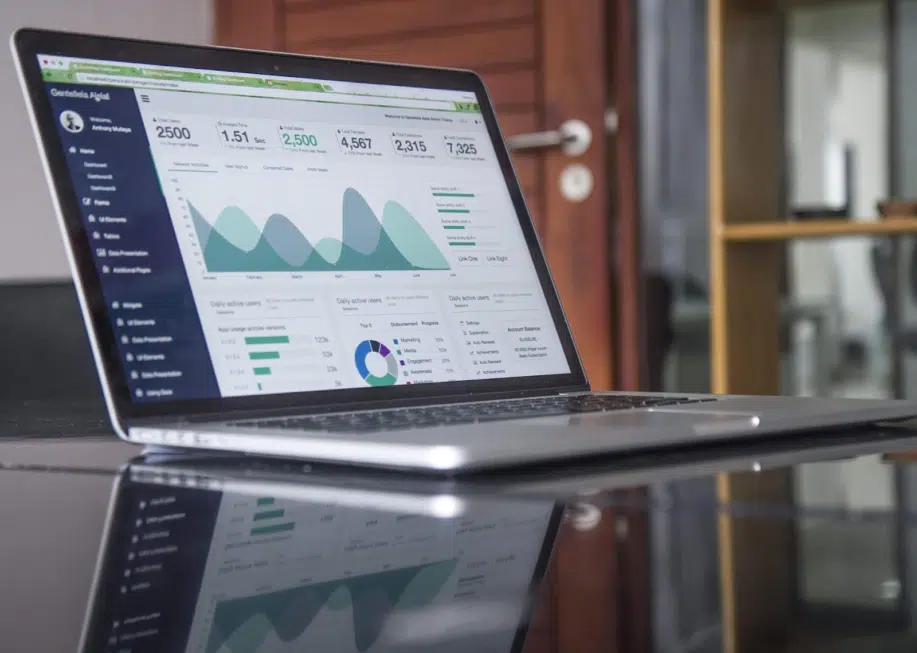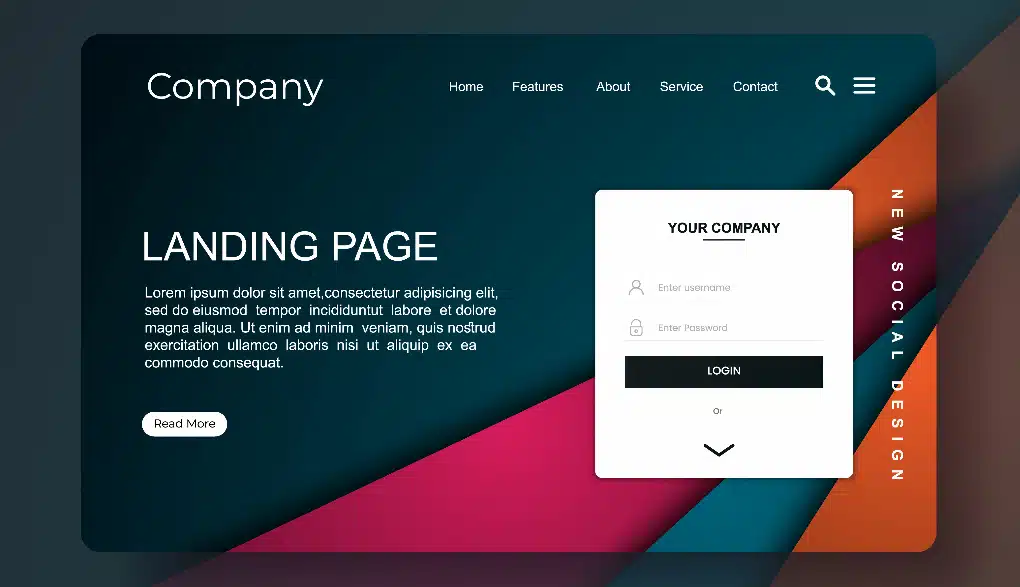Improving your landing page conversions can require a lot of testing over time. However, having a list of proven and practical conversion tips will help you get results quicker.
Unlike homepages, landing pages encourage visitors to take one particular action – read further, sign up, make a purchase, and so on. Because there are fewer distractions on a landing page, it is easier for users to make a decision and therefore increase conversions.
According to statistics, landing pages have a 26% average conversion rate. That is why it is so important to invest in landing page optimization and understand how it works. Additionally, starting out with a well-optimized website template or custom HTML landing page template can make a difference as well.
Best Tips For Improving Landing Page Conversion Rates

Let’s now take a look at how to improve conversion rates. Below, we share 14 tips on how to increase the conversion rate and turn random visitors into new customers, subscribers, and members.
1. Define the goal of your landing page
You will probably agree that for your landing page to be a success, you should, first of all, understand its purpose. What are you willing to achieve with this page? What do you want to convince users to do? Here are some options:
- Sign up for email newsletters
- Make a purchase
- Order a callback
- Register for a webinar
- Start a trial period
- Contact sales managers
There should be more than one goal but remember that landing pages are always focused on one action, so avoid the temptation of packing it with as many services as possible.
2. Always be in touch
Potential leads may have different questions about your product and service and the faster you answer them, the more likely they will act. Make it easy to contact the support team and take care of round-the-clock support if possible. The best communication channels are:
- Live chat. Visitors are directly connected with a support agent and can ask questions in real-time right through the website.
- Phone. Many people choose phone support for its simplicity, speed, and empathy. It is great if you offer a toll-free number in Canada, the USA, or another country where your company operates. Thus, customers won’t need to pay to speak to your representatives.
- Social media. Alternatively, there should be links to Facebook, Instagram, or LinkedIn where users not only ask their questions but get recent news and updates.
There might also be email assistance for non-urgent requests. Remember that the address should be professional.
3. Know your target audience
The next step towards higher conversion rates is understanding your customers. You need to know what they think and feel when jumping onto your website. The more information you collect, the easier it is to create a landing page that brings value and motivates users to make the next step.
The good news is that this stage is quite easy to complete by creating a buyer persona. On your own or with the help of specific software and agencies, gather information about your audience’s age, gender, location, academic background, job, hobbies, and so on. Thus, you will understand their pains and be able to offer the best solution. Nowadays, everyone wants personalized treatment, so give it to them!
4. Work on your value message
Value messaging is a way of communicating with potential customers that focuses on how you can solve their problems and bring value. A value message on the landing page should be brief, and clear, and explain the main benefit visitors will get. Considering that you are limited in space and symbols, here are a few tips that will simplify the process of creating a selling value message:
- Concentrate on the main benefit. Instead of enumerating available features, explain how your product or service can make the lives of your customers better;
- Put it in a visible place, so that readers see your value message immediately;
- Be brief and use simple language to render your message clearly.
5. Write a powerful call-to-action
As we mentioned above, the main goal of a landing page is to motivate visitors to take action. A powerful CTA hints to people about what to do next and greatly contributes to higher conversion. When working on a CTA, stick to action verbs and be specific. Instead of pressing here write get 10% off for the first order.
Words of urgency like immediately or only today encourage visitors not to postpone a decision. You should also pay much attention to design. Test different fonts, colors, and sizes to make your CTA visible and organic. If you lack creativity, hire an experienced content writer or at least use call-to-action templates.
6. Improve headings
Most visitors don’t read every word on the page but they surely pay attention to the headings. If you want to improve the conversion rate, make sure that your headings are clear and concise. They should summarize your key points and grab attention. A good idea is to appeal to the reader’s emotions: surprise, motivation, or encouragement. Many content creators go even further and use negative emotions like anger, grief, or aggression. But be very attentive and insert them only when appropriate.
Competition in the online space is very tense. Most likely, there are thousands of similar websites in your niche, so you should do everything possible to stand out and make the user experience as positive as possible. One of the best ways to do that (and to improve conversion) is to offer simple navigation. When visitors know how to find what they are looking for and do it fast, they are more likely to take action. Ways to improve navigation are:
- User-friendly menu with the main sections of your site. Create a clear and understandable hierarchy;
- Descriptive links that show exactly where they will lead to. Forget about generic titles like press here;
- Visual navigation. Images and smaller icons are very useful when you need to highlight certain pages and elements. But know when enough is enough;
- Search window. If there’s a lot of content on the website, adding a search bar is a great idea.
Great navigation should be present not only on a landing page but throughout the website as well. All pages should be within several clicks from the homepage. If necessary, add a sitemap to simplify the search.
8. Keep mobile users in mind
The importance of conversion rate is impossible to overestimate, so you should use all available tips and strategies to boost it. One of the criteria that impact conversion and search engine optimization is mobile-friendliness. If your landing page and website don’t load properly on smartphones and tablets, you are doomed. Actually, the number of mobile users has already outgrown desktop ones, so you should always think about how your landing page looks on smaller screens. Apart from making it responsive, make sure to add mobile-oriented features like simpler registration forms and smaller images that look organic on all types of screens.
9. Increase page load speed
Another way to boost conversion is to ensure that your landing page loads fast. This step is often overlooked because marketers and business owners are more concerned with the content. But in reality, even a hundred optimizations on the website won’t increase conversion if the loading speed is delayed even by a single second. The simplest way to fix the situation is to reduce page weight. The smaller megabytes, the better. Especially considering that many users visit your website on smartphones and with 4G or 5G, not a stable Internet connection. Try to compress images and use lazy loading for videos.
10. Add testimonials and reviews
Although landing pages should focus on the essentials, adding a small section with testimonials is very important and can significantly improve conversion. Here is why:
- Helps to make a decision. Visitors get a new and unbiased perspective on your goods or services and are more eager to place an order;
- Builds trust. Reviews act as evidence that your website is good and that other users choose it as well;
- Improves UX thanks to valuable information and insights;
- Boosts SEO as testimonials are a great source of unique content that Google’s bots love.
When preparing this section, be brief. Adding a few testimonials with the user’s nickname or picture is enough. But make sure they don’t sound too laudatory.
11. Make the page look good
Content is more than plain text – it is your images, videos, and buttons that make the overall impression positive. You have only a few seconds to impress visitors, so ensure that your landing page is interesting and visually appealing. Insert multimedia elements to add life to the website. They should be of good quality and relevant. Using videos is a great way to tell visitors about your product, as people are more eager to watch than read. But don’t forget to add subtitles, as some visitors might watch videos without sound or have hearing impairments.
12. Less is more
Remarketing is a brilliant advertising instrument that shows ads to users who previously left your website without acting. With its help, you can remind people of your brand and offer them relevant content. You will be on top of their mind the next time they need a similar service or good. Remarketing can also be used to offer an incentive – a discount, trial period, or any other special offer to motivate them to return.
13. Offer a trial version
A free trial version can be a great way to decrease bounce rates and attract more customers. If you are ready to offer a free period, keep the following in mind:
- Make it visible. Users should easily find information about the trial period;
- Give a clear description. Be specific and detailed when discussing the offer, so visitors could understand what they will get;
- Point out that they can cancel the trial period at any time without any strings attached;
- Create a simple sign-up form, so that visitors could opt for the offer without any problems;
- Send follow-up emails to remind users about yourself and encourage them to order a service or good.
14. Conduct regular A/B testing
The conversion rate can change both ways under the influence of multiple factors. Sometimes it is difficult to understand whether you are doing everything correctly, so testing your landing page becomes a great solution. With its help, you can understand what is working and what is not. The best approach is A/B testing which consists of 5 stages:
- Pick a hypothesis you need to test. For example, a feature of the landing page that impacts conversion;
- Create two different versions of the page based on the feature selected during the first stage;
- Show each version to the audience and record what they think;
- Compare results and decide which version has better conversion;
- Put obtained information into practice.

Summary on Improving Landing Page Conversions
Marketers and entrepreneurs fear poor conversion rates which are impacted by numerous factors and rather often it is difficult to understand what went wrong. But in this guide, we cover the most common problems and the ways to solve them. By trial and error, you will surely see higher conversions not depending on the type of landing page you have. Good luck!
